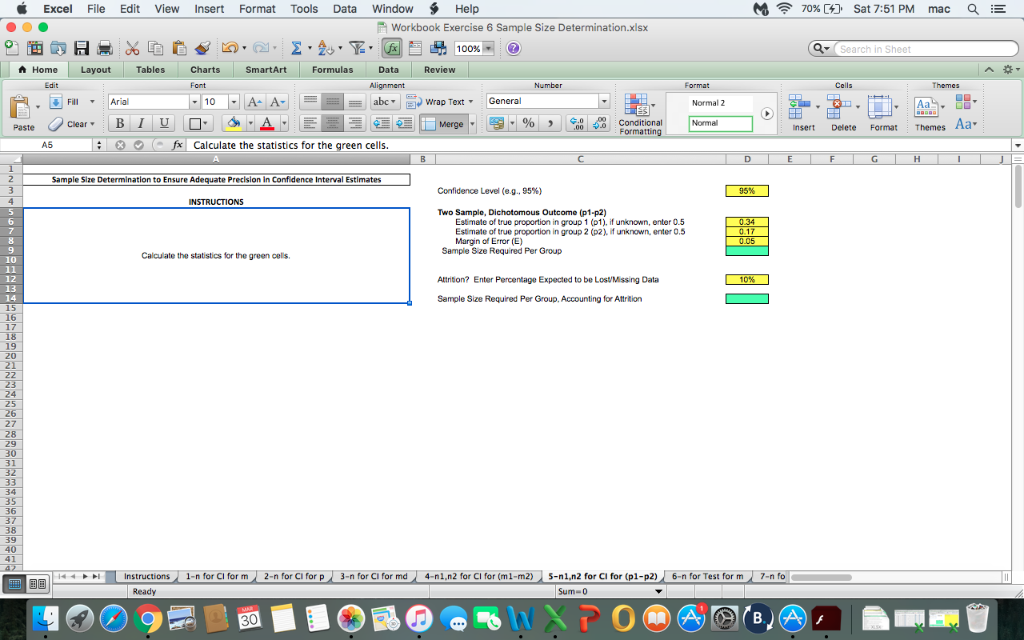POWER AND SAMPLE SIZE CALCULATOR This software is a unique software used to calculate the power and the sample size of any survey. It is mostly used in domains such as biology, bio-statistics, the social Sciences, agriculture and medicine. This software can be used for studies with dichotomous continues or survival response measures. One of the most common requests that statisticians get from investigators are sample size calculations or sample size justifications. The sample size is the number of patients or other experimental units included in a study, and determining the sample size required to answer the research question is one of the first steps in designing a study.
STPLAN
Double Precision Study Planning CalculationsDescription
STPLAN performs power, sample size, and related calculations needed to plan frequentist studies. Parameters of a test include those necessary to describe the distributions under the null and alternative hypotheses, sample sizes, significance levels, and power. Given values for all but one parameter, STPLAN will calculate the value of that one parameter.
This product does not require registration before downloading. However, if you do register first, we can notify you of updates to the software.
The distribution includes command line executables for Windows and Macintosh (PowerPC and Intel) as well as source code.
The following testing situations are covered by STPLAN:
- Binomial Distribution
- One-sample
- Two-sample
- Two-sample above and below median
- Fisher's exact
- Matched pairs
- Conservative/expensive treatment
- Two-sample test in which one group is a historic control
- K-sample
- Case-control
- Matched Case-Control
- Sample size correction for loss of subjects over time
- Poisson Distribution
- One-sample
- Two-sample
- Normal Distribution
- One-sample
- Two-sample, equal variances
- Two-sample, unequal variances
- Two-sample log-normal
- Exponential Distribution
- One-sample
- Two-sample
- Survival Times
- One Sample
- Randomized clinical trial with exponential survival
- Historic control with exponential survival
- Randomized trial with two hazard rates
- The Correlation Coefficient
- One-sample
- Two-sample
The user's manual is available here.
Contact: Barry W. Brown
Software developed by
- Barry W. Brown
- Christopher Brauner
- Albert Chan
- David Gutierrez
- Jay Herson
- James Lovato
- James Polsley
- Kathy Russell
- John Venier
Language: Fortran 77

Known issues
One-Sample Survival Studies: When the significance is specified, the calculations are performed assuming a one-sided test, regardless of whether a one-sided or a two-sided test is specified. As far as we know the one-sided calculations are correct.
Documentation: For some studies, the examples in the User's Guide (stplan_user.pdf) show menus and study specifications that no longer correspond to the current menu-driven command-line interface for these studies.
This website has been prepared to assist users in computing either a sample size or power value for a microarray experimental study. The user is referred to the cited references for technical background on the methodology underpinning these calculations. This site provides support for five types of sample size and power calculations as listed below. These five types can be adapted in various ways to encompass many of the standard designs encountered in practice. Click on the design to open the computational routine. Click on 'example' to see explanations and examples of each type, drawn from Lee (2004).
Sample Size Calculations for
- Completely randomized treatment-control designs (example)
- Matched-pairs designs (i.e. randomized block designs) (example)
Power Calculations for
- Completely randomized treatment-control designs (example)
- Matched-pairs designs (i.e. randomized block designs) (example)
- Multiple-treatment designs having an isolated treatment effect (example)

Cited References
- Lee, M.-L. T. (2004). Analysis of Microarray Gene Expression Data, Kluwer Academic Publishers, ISBN 0-7923-7087-2.
- Lee, M.-L. T., Whitmore, G. A. (2002). Power and sample size for DNA microarray studies, Statistics in Medicine, 21:3543-3570
Acknowledgements
Sample Size Calculation Software Machine

Sample Size Calculation Software Machinery
This project was support by NIH grant HG02510 (Lee, M-L.T.). The computer routines supporting this website have been developed and are maintained by Dr. Weiliang Qiu, Assistant Professor, Channing Laboratory, Brigham and Women's Hospital and Harvard Medical School, Boston.